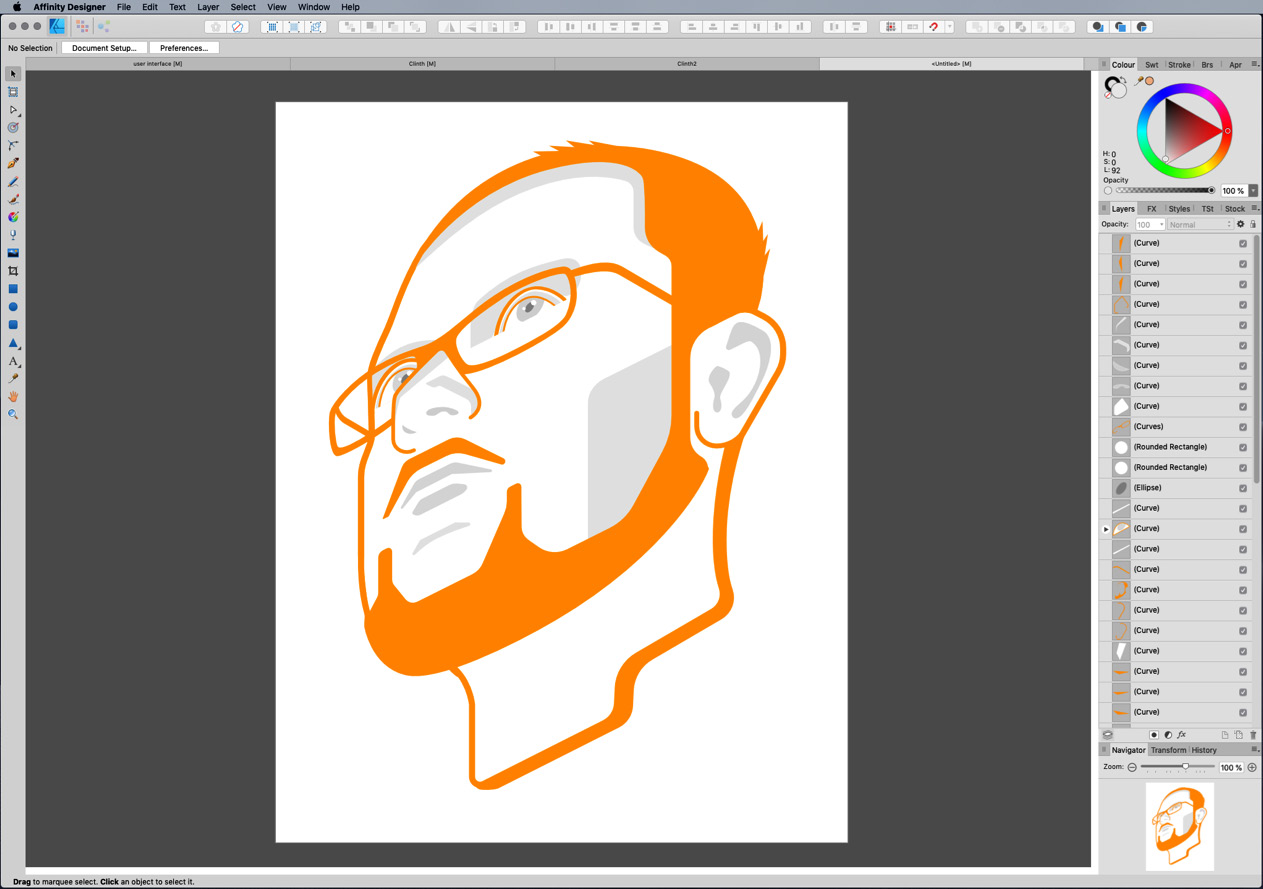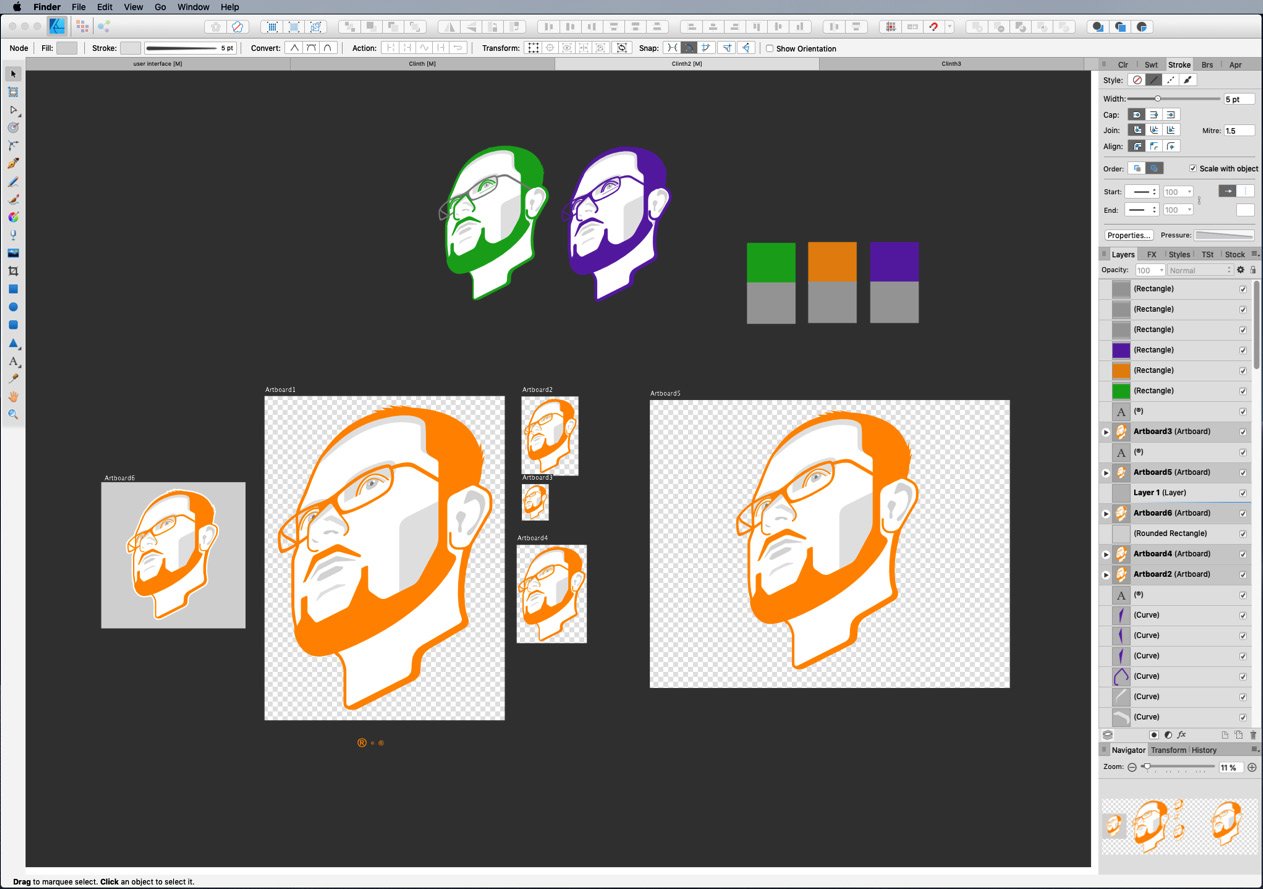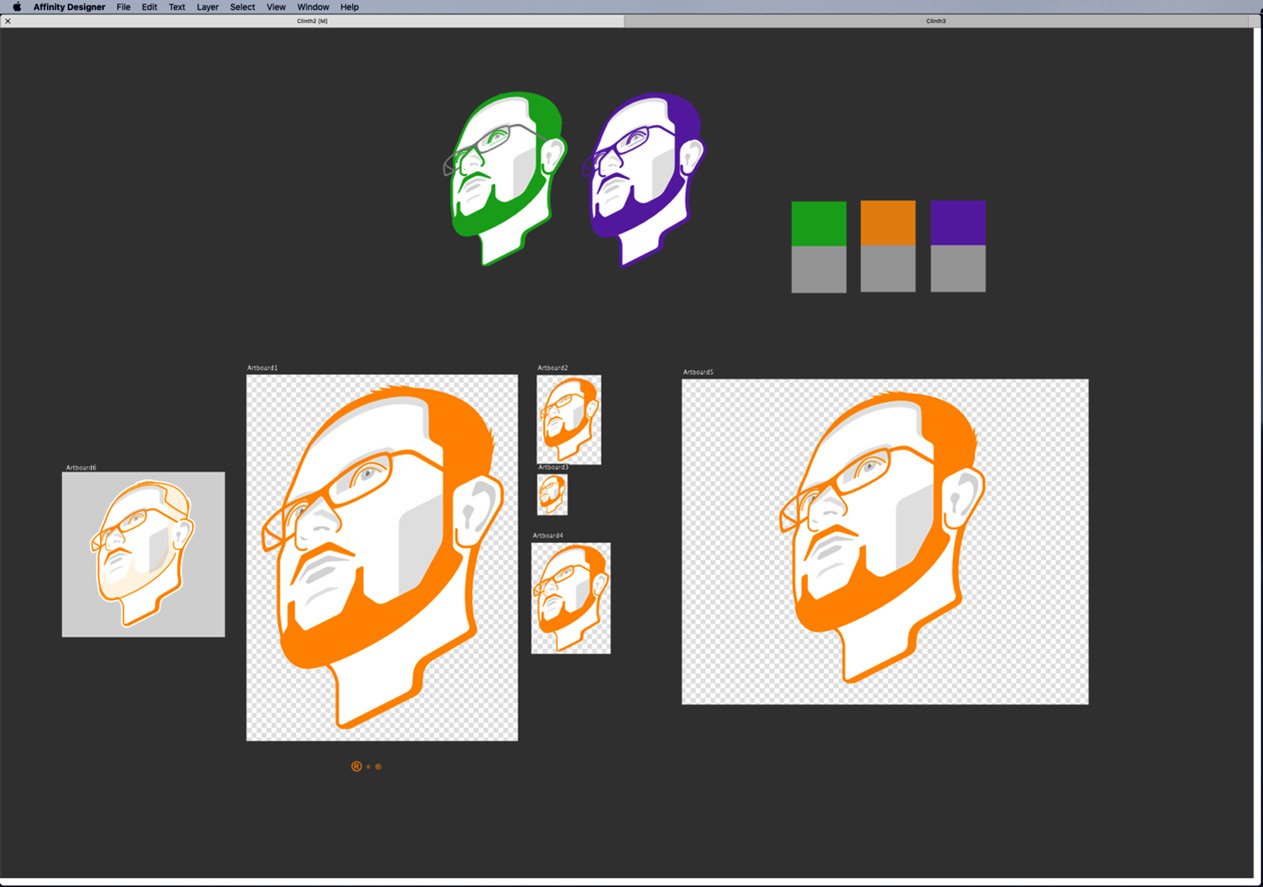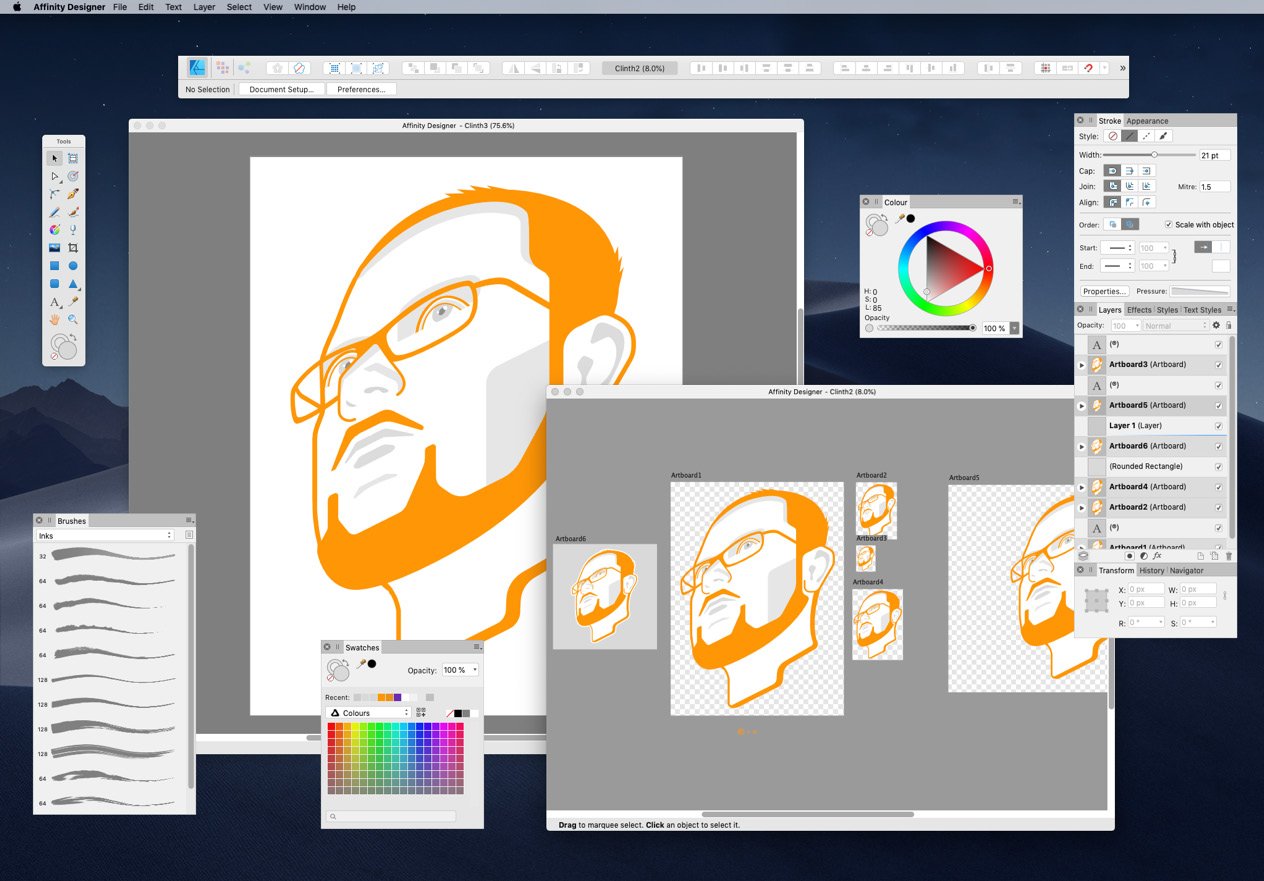The document view and artboards – overview
The document view is the large central area where you will bring your artwork or designs to life. The document is surrounded by a pasteboard area where you can place elements or references you use over the course of a project that will not be printed or get exported in the final file. Additionally, elements that spill over the document view border into the pasteboard will be clipped at the edges and the areas that lie within the pasteboard will not appear in the printed or exported artwork. It's important to note that any elements that are in the pasteboard area will be saved in your file.
When setting up a new file, Affinity Designer gives you the option of a single-page document, as shown in Figure 1.48:

Figure 1.48 – Document view – a single-page document
Or if you prefer, you can set up your file to work with multiple "pages" called artboards, as shown in Figure 1.49:

Figure 1.49 – Artboards – a multiple artboard document with elements on the pasteboard
The type of work you do with Affinity Designer will determine whether you should work with single-page or multiple artboards. You can always start out with a single-page document and add artboards later if you wish.
The next three options are options that fall under what I like to call "design aids." They allow you to quickly reconfigure your interface to suit your needs as you work.
Toggle UI
Sometimes you just want to view your document uncluttered and without the UI. A fast way to hide all of the panels and tools is to press the Tab key. This will hide all of the UI except for the top menu bar and leave just your document's content. Pressing Tab again will unhide the UI. Toggle UI can also be found in the top menu bar, under View | TOGGLE UI, right down at the bottom of the View menu dropdown.

Figure 1.50 – Toggle UI – Document view with hidden UI tools and panels
New View
Affinity Designer allows you to have multiple views of the same file open in the same document. Imagine you are working in a zoomed-in area of your document but would also like to see the whole document in another window. This is possible with New View. Go to View | NEW VIEW to create a new view of your current document.
Window modes
So far, we have only shown the user interface in Normal mode. Affinity Designer also has Separated mode. In this mode, all of the toolbars and panels are basically floating on the screen. See Figure 1.51. This mode can be handy if you have two or more documents open and you want to see them all at the same time. Go to Window | SEPARATED MODE.

Figure 1.51 – Separated Mode – Document view with floating UI tools and panels
Next, we'll cover the basics of getting around in your document. The things you'll find yourself doing quite often and will soon become second nature.











































































